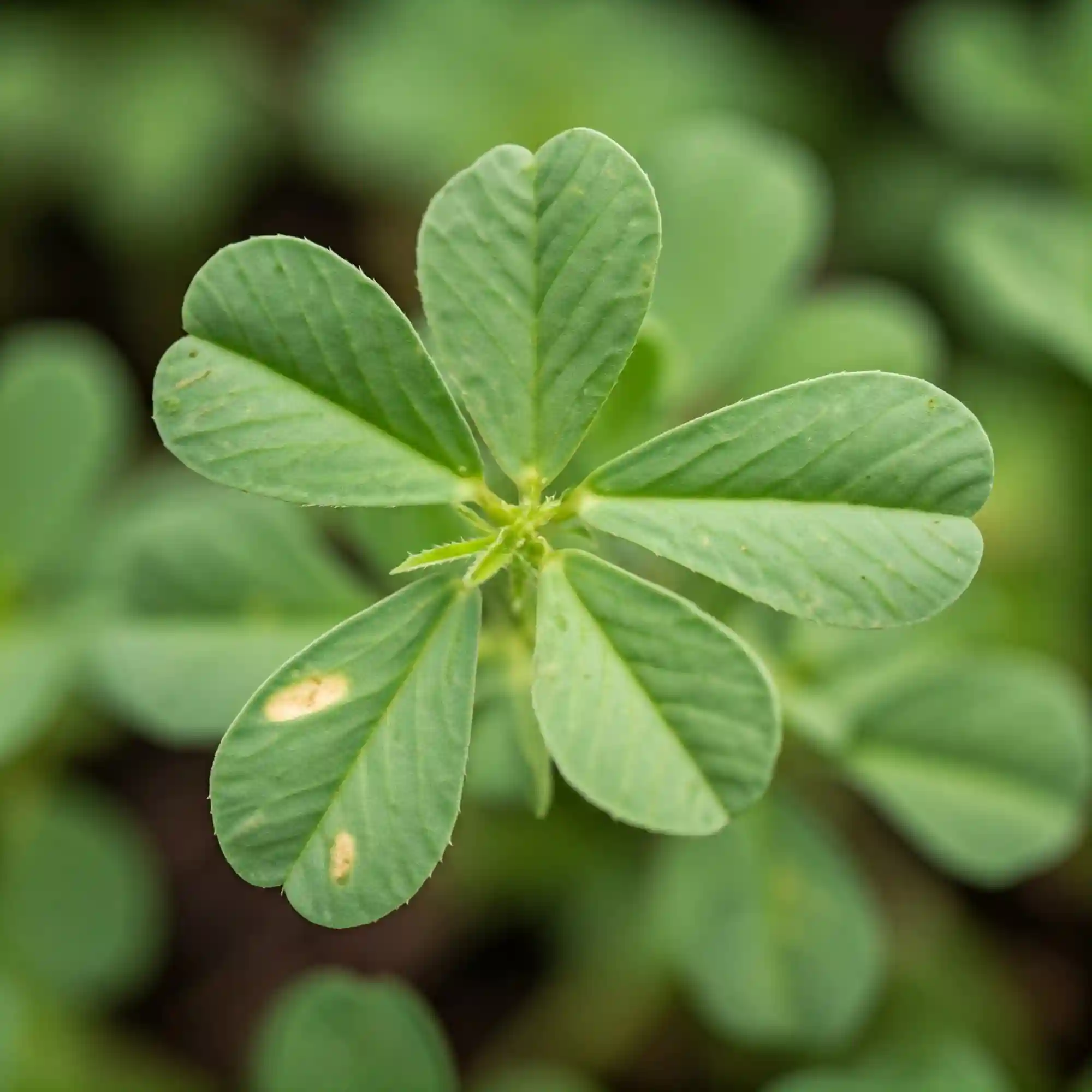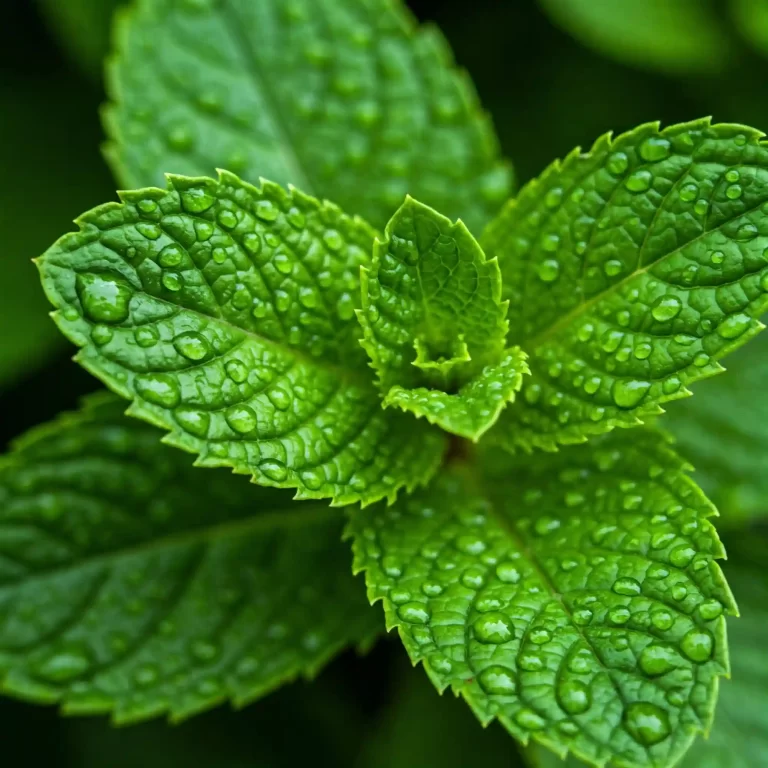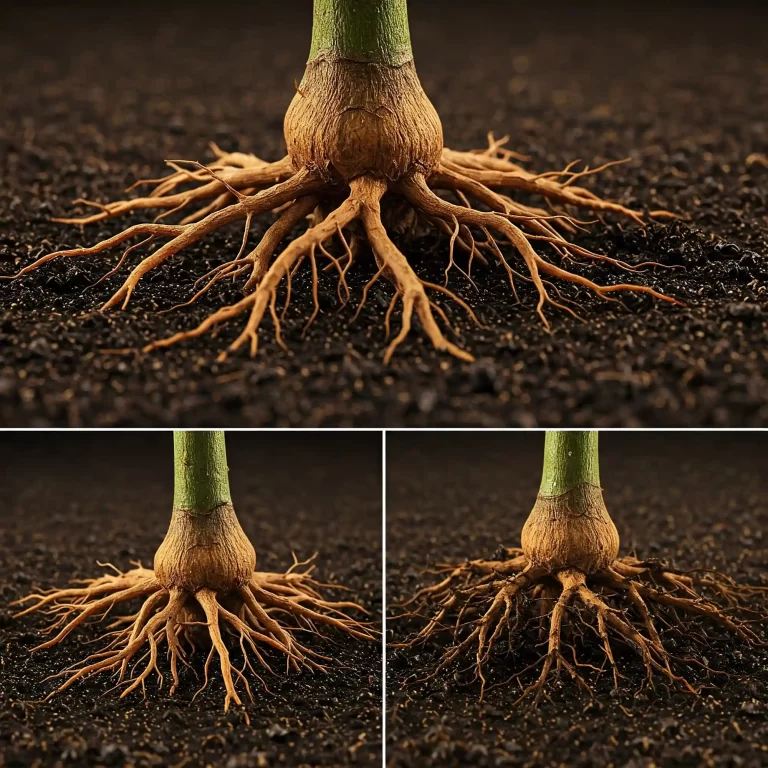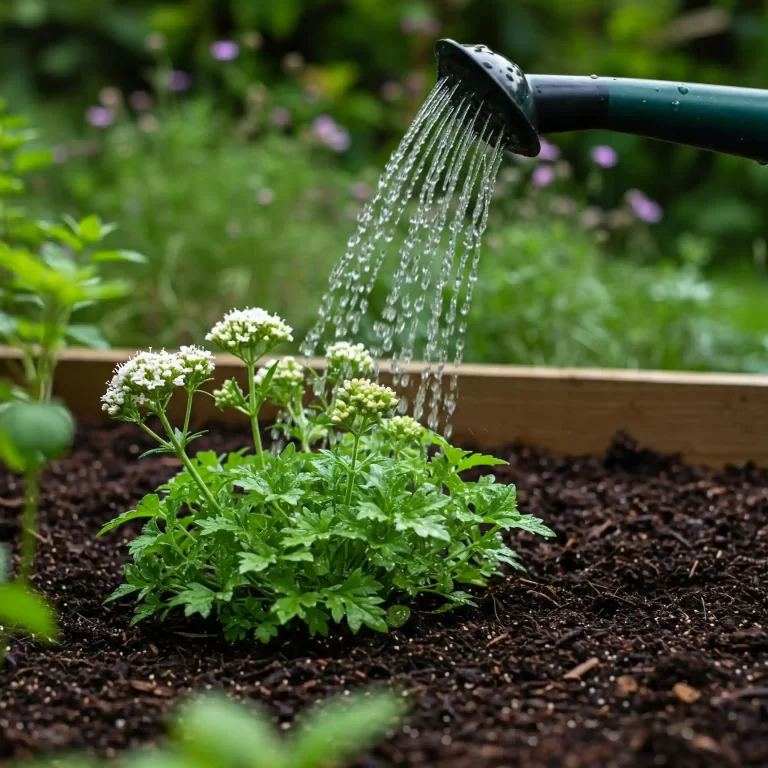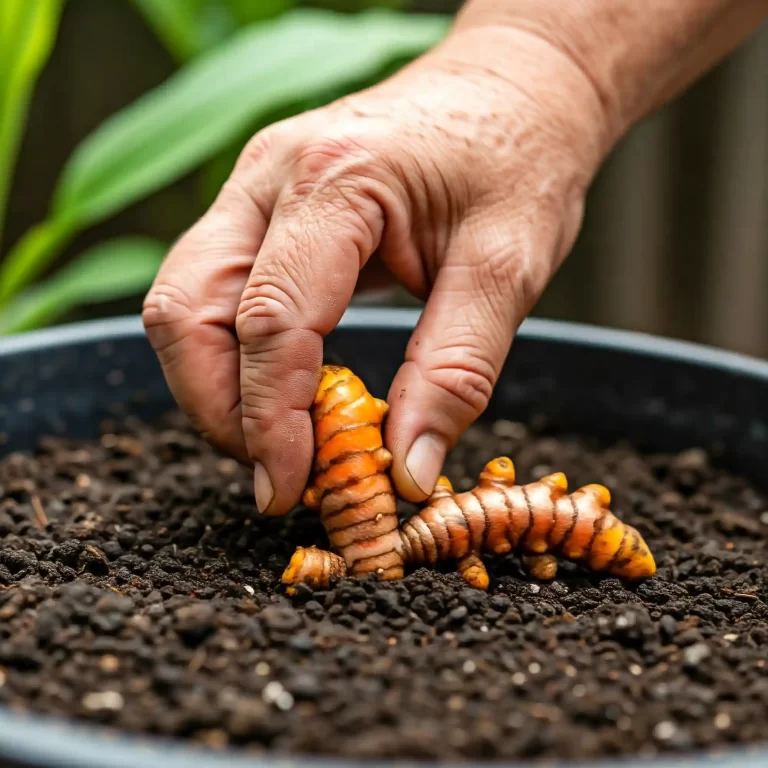Are you tired of bland dishes lacking that special something? Do you crave fresh, homegrown ingredients but feel intimidated by the thought of starting an herb garden? I understand. Many people find the idea of growing their own herbs daunting, picturing complex processes and endless hours of maintenance. But what if I told you that growing your own flavorful fenugreek herbs is surprisingly simple, even if you’re a complete beginner? This guide is your solution. I’ll walk you through each step, from seed to harvest, ensuring you can enjoy the fresh taste and health benefits of homegrown fenugreek with minimal effort. You’ll discover just how rewarding it is to nurture your own little herb garden.
Understanding Fenugreek: A Versatile Herb
Fenugreek ( Trigonella foenum-graecum), a member of the legume family, is a truly versatile herb with a rich history. Originating in the Mediterranean region and parts of Asia, it’s been cultivated for centuries for both its culinary and medicinal properties. I’ve personally found it fascinating how one plant can offer so much. You might recognize its distinct aroma, slightly sweet and maple-like, which comes from the compound sotolon.
What is Fenugreek?
Fenugreek is an annual plant, meaning it completes its life cycle in one year. It grows to about two feet tall and produces small, white flowers that develop into slender pods containing the characteristic yellowish-brown seeds. These seeds, along with the fresh and dried leaves, are used in a variety of ways.
History and Origins
Its use dates back to ancient times; it was even found in the tomb of Tutankhamun! Historically, it was used in traditional medicine in various cultures, including ancient Egypt and India. Its use was documented in the Ebers Papyrus (circa 1500 BC), an ancient Egyptian medical text. This historical use speaks volumes about its recognized value.
Culinary Uses
In the kitchen, fenugreek plays a prominent role in Indian, Middle Eastern, and North African cuisines. The seeds are often toasted to enhance their flavor and are a key ingredient in spice blends like curry powder and garam masala. The fresh leaves, known as “methi” in Hindi, add a slightly bitter, yet pleasant flavor to dishes like curries, stews, and vegetable preparations. I often add a pinch of toasted fenugreek seeds to my lentil soup for a warm, earthy note. You can also use the sprouts in salads and sandwiches for a fresh, slightly peppery kick. I encourage you to experiment with different forms of fenugreek in your cooking; you might be surprised by its versatility.
Health Benefits
Fenugreek has also gained attention for its potential health benefits. It’s a good source of fiber, iron, and other nutrients. Some studies suggest it may help regulate blood sugar levels, improve cholesterol, and even increase milk production in breastfeeding mothers. It is important to note that while some research suggests potential health benefits, it’s crucial to consult with a healthcare professional before using fenugreek for any medicinal purpose. You should always prioritize professional medical advice over self-treatment.
Why Grow Your Own?
Growing your own fenugreek offers several advantages:
- Freshness: Freshly harvested fenugreek has a more vibrant flavor than store-bought dried versions. I’ve noticed a significant difference in the aroma and taste when using homegrown fenugreek.
- Cost-effectiveness: Growing your own herbs can save you money in the long run. A small packet of seeds can yield a large harvest.
- Control over growing practices: You can ensure your fenugreek is grown organically, without the use of harmful pesticides or chemicals. This is a big plus for me, as I prioritize organic gardening practices.
Nutrient Content of Fenugreek Seeds (per 100g)
| Nutrient | Amount |
| Protein | 23g |
| Fiber | 25g |
| Iron | 186mg |
| Calcium | 176mg |
| Potassium | 770mg |
This information helps illustrate the nutritional value of fenugreek seeds.
How to Plant Fenugreek Seeds: Getting Started
Now that you understand the many benefits of fenugreek, you’re probably eager to get started. I know I was when I first began! This section will guide you through the process of planting fenugreek seeds, ensuring you have a successful start to your fenugreek garden. You’ll find it’s a simple process, and with a little care, you’ll be well on your way to harvesting your own fresh herbs.
Choosing the Right Seeds
The first step is selecting high-quality fenugreek seeds. When purchasing seeds, look for reputable suppliers, either online or at your local garden center. I’ve found that choosing organic seeds is a great way to ensure you’re starting with the healthiest possible plants, free from any chemical treatments. You want to look for seeds that are plump and uniform in color, avoiding any that appear shriveled or damaged.
When to Plant
Timing is key when planting fenugreek. This herb prefers cooler temperatures and can be sown in early spring or late summer/early fall. I’ve had the best results with spring plantings, as the plants have plenty of time to mature before the heat of summer sets in. You should consider your local climate when determining the best time to plant. In warmer regions, a fall planting might be ideal, while in colder climates, spring is generally the better choice.
Direct Sowing vs. Starting Indoors
Fenugreek can be directly sown into the garden or started indoors. I usually prefer direct sowing, as it avoids the need for transplanting, which can sometimes stress the young plants. However, if you live in an area with a short growing season, starting seeds indoors a few weeks before the last frost can give you a head start.
Preparing the Soil
Fenugreek thrives in well-drained soil that is rich in organic matter. I recommend amending your garden soil with compost or well-rotted manure before planting. This will improve drainage and provide essential nutrients for your growing fenugreek plants. A soil pH between 6.0 and 7.0 is ideal. You can easily test your soil pH with a home testing kit, available at most garden centers.
Step-by-Step Planting Instructions
Whether you’re direct sowing or starting indoors, the planting process is relatively simple:
- Direct Sowing:
- Prepare the soil as described above.
- Create shallow furrows about ½ inch deep.
- Sow the seeds about 1 inch apart.
- Cover the seeds with soil and gently firm the soil.
- Water thoroughly.
- Starting Indoors:
- Fill small pots or seed trays with a good-quality potting mix.
- Sow the seeds about ½ inch deep.
- Keep the soil moist but not waterlogged.
- Place the pots in a warm, sunny location.
- Once the seedlings have developed a few sets of true leaves, you can transplant them into the garden.
Germination
Fenugreek seeds typically germinate within a few days to a week, depending on the temperature and moisture levels. I’ve noticed that keeping the soil consistently moist, but not soggy, is key to successful germination. Once the seedlings emerge, make sure they receive plenty of sunlight.
By following these simple steps, you’ll be well on your way to growing your own healthy and productive fenugreek plants. I’m excited for you to experience the joy of nurturing these versatile herbs from seed to harvest.
How to Grow Fenugreek: Providing the Right Conditions
Now that your fenugreek seeds are planted, it’s crucial to provide them with the right conditions to thrive. I’ve learned through experience that fenugreek, like any other plant, has specific needs when it comes to sunlight, water, temperature, and nutrients. By understanding these needs, you can ensure your plants grow strong and healthy, providing you with a bountiful harvest.
Sunlight
Fenugreek loves sunlight! It requires at least 6-8 hours of direct sunlight per day to grow optimally. I recommend choosing a location in your garden that receives full sun for most of the day. If you’re growing fenugreek indoors, place the pots near a sunny window, preferably one that faces south or west. You might need to supplement with artificial grow lights, especially during the shorter days of winter.
Watering
Watering is another important aspect of fenugreek care. While fenugreek needs consistent moisture, it’s crucial to avoid overwatering, which can lead to root rot. I’ve found that watering deeply once or twice a week is usually sufficient, allowing the soil to dry out slightly between waterings. You should adjust the watering frequency depending on the weather conditions and the type of soil you’re using. During hot, dry periods, you might need to water more frequently, while during cooler, wetter periods, you can water less often.
Temperature and Climate
Fenugreek prefers cooler temperatures, ideally between 60-75°F (15-24°C). It can tolerate some heat, but extreme temperatures can cause the plants to bolt (go to seed prematurely), which can reduce your harvest. I’ve found that fenugreek grows best in USDA plant hardiness zones 6-11. If you live in a colder climate, you can still grow fenugreek, but you might need to start the seeds indoors and provide some protection during the winter months.
Fertilizing
Fenugreek is not a heavy feeder, but it can benefit from occasional fertilization. I recommend using a balanced organic fertilizer, such as compost tea or fish emulsion, diluted to half strength. You can fertilize your fenugreek plants every few weeks during the growing season. Avoid over-fertilizing, as this can lead to excessive foliage growth and reduce seed production.
Growing in Containers
If you’re growing fenugreek in containers, there are a few things to keep in mind. First, choose a container that is at least 6 inches deep to accommodate the roots. Make sure the container has drainage holes to prevent waterlogging. I recommend using a well-draining potting mix, such as a mix of peat moss, perlite, and vermiculite. You’ll also need to water more frequently when growing in containers, as the soil tends to dry out faster.
How to Care for Growing Fenugreek Plants
Now that your fenugreek plants are growing, it’s essential to provide ongoing care to ensure they stay healthy and productive. From my experience, consistent attention to a few key areas like weeding, pest control, and disease prevention can make a big difference in your harvest. You’ve already put in the work to get them started, so let’s make sure they thrive!
Weeding and Thinning
Just like any other garden plant, fenugreek needs space to grow. Weeds can compete with your fenugreek for valuable resources like sunlight, water, and nutrients. I recommend regularly weeding around your plants to keep them free from competition. When the seedlings are still small, it’s also important to thin them out, providing adequate spacing between each plant. This allows them to develop fully and prevents overcrowding, which can lead to disease.
Pest and Disease Control
While fenugreek is generally a hardy plant, it can be susceptible to certain pests and diseases. I’ve found that keeping a close eye on your plants and taking preventative measures is the best way to avoid problems.
- Pests: Common pests that can affect fenugreek include aphids and spider mites. These small insects can suck the sap from the leaves, weakening the plant. If you notice an infestation, you can try spraying the plants with a strong jet of water or using an insecticidal soap. I prefer using natural methods like introducing beneficial insects, such as ladybugs, which prey on aphids.
- Diseases: Fenugreek can also be susceptible to fungal diseases like root rot and powdery mildew. Root rot is caused by overwatering and poor drainage, so it’s essential to ensure your soil is well-draining. Powdery mildew appears as a white powdery substance on the leaves and can be treated with a fungicide or a homemade solution of baking soda and water.
Troubleshooting Common Problems
Even with the best care, you might encounter some common problems when growing fenugreek. Here are a few I’ve come across and how I’ve addressed them:
- Slow Germination: If your fenugreek seeds are slow to germinate, it could be due to cold soil temperatures or insufficient moisture. Make sure the soil is consistently moist and that the temperature is within the ideal range (60-75°F or 15-24°C).
- Yellowing Leaves: Yellowing leaves can be a sign of nutrient deficiency, overwatering, or underwatering. Check the soil moisture and consider fertilizing with a balanced organic fertilizer.
- Stunted Growth: If your plants are not growing as vigorously as they should, it could be due to insufficient sunlight, poor soil quality, or pest or disease problems. Make sure your plants are receiving enough sunlight and that the soil is well-draining and rich in organic matter.
By being proactive and addressing any issues promptly, you can keep your fenugreek plants healthy and productive.
How to Harvest and Store Fenugreek Herbs
After nurturing your fenugreek plants, the most rewarding part is finally here: harvesting! I’ve always found harvesting to be a satisfying culmination of the growing process. Knowing you’re about to use fresh, homegrown herbs in your cooking or for other purposes makes all the effort worthwhile. This section will guide you through the proper techniques for harvesting both the leaves and seeds of your fenugreek plants, as well as how to store them to maintain their flavor and potency.
When to Harvest
The timing of your harvest depends on whether you’re interested in using the leaves or the seeds.
- Leaves: You can begin harvesting fenugreek leaves as soon as the plants have developed several sets of true leaves, usually about 3-4 weeks after planting. I recommend harvesting the outer leaves first, allowing the inner leaves to continue growing. You can continue harvesting leaves throughout the growing season.
- Seeds: If you’re growing fenugreek for its seeds, you’ll need to wait until the plants have flowered and produced seed pods. The pods will turn from green to yellow and then brown as they mature. Once the pods are dry and brittle, you can harvest them.
How to Harvest
- Leaves: The easiest way to harvest fenugreek leaves is to simply snip them off with scissors or your fingers. I prefer using scissors to make a clean cut and avoid damaging the plant. You can harvest a few leaves at a time or harvest a larger quantity for immediate use.
- Seeds: To harvest the seeds, cut the entire plant at the base once the pods are dry. Gather the cut plants and place them in a paper bag or on a clean cloth in a warm, dry place. Allow the pods to dry completely for a few more days. Once they’re thoroughly dry, you can thresh them by gently rubbing the pods between your hands or by lightly beating them against a hard surface. This will release the seeds.
Proper Storage
Proper storage is essential to maintain the quality of your harvested fenugreek.
- Fresh Leaves: Fresh fenugreek leaves can be stored in the refrigerator for a few days. I recommend wrapping them in a damp paper towel and placing them in a plastic bag or container.
- Dried Leaves: To dry fenugreek leaves, you can spread them out on a clean cloth or screen in a warm, dry place. You can also use a dehydrator. Once the leaves are completely dry, store them in an airtight container in a cool, dark place.
- Seeds: Dried fenugreek seeds can be stored in an airtight container in a cool, dark place for several months.
Tips for Maximizing Your Harvest
- Regular harvesting of the leaves will encourage the plant to produce more foliage.
- Allowing some plants to go to seed will ensure you have seeds for future plantings.
- Proper drying and storage will help maintain the flavor and potency of your harvested fenugreek.
Now that you know how to harvest and store your fenugreek, you’re ready to enjoy the fruits (or rather, leaves and seeds!) of your labor.
Using Your Homegrown Fenugreek
Now that you’ve successfully grown, harvested, and stored your fenugreek, it’s time to put it to good use! I find this part particularly exciting, as it’s where you get to experience the full potential of your homegrown herbs. Whether you’re a seasoned chef or just starting out in the kitchen, fenugreek offers a unique flavor profile that can enhance a wide variety of dishes. Beyond the culinary realm, fenugreek also has some interesting applications you might want to explore.
Culinary Uses of Fenugreek Leaves and Seeds
Fenugreek is a staple in many cuisines, particularly Indian, Middle Eastern, and North African. Both the leaves and seeds offer distinct flavors and can be used in numerous ways:
- Leaves: Fresh fenugreek leaves, known as “methi” in Hindi, have a slightly bitter, yet pleasant taste. They can be used fresh in salads, added to curries and stews, or sautéed as a side dish. Dried fenugreek leaves have a more concentrated flavor and are often used in spice blends.
- Seeds: Fenugreek seeds have a warm, slightly sweet, and maple-like aroma. To enhance their flavor, I recommend lightly toasting them in a dry pan before using. This brings out their nutty notes and reduces some of the bitterness. The seeds can be used whole or ground into a powder and added to curries, stews, sauces, and bread.
Flavor Profiles
- Fresh Leaves: Slightly bitter, herbaceous, with a fresh green note.
- Dried Leaves: More intense bitterness, with a hint of sweetness.
- Seeds: Warm, sweet, slightly bitter, with a maple-like aroma.
Using Fenugreek Sprouts
Fenugreek sprouts are a nutritious and flavorful addition to salads, sandwiches, and other dishes. They have a fresh, slightly peppery taste. To sprout fenugreek seeds, simply soak them in water for a few hours, then drain and rinse them. Place the seeds in a jar or sprouting container, cover with a cloth, and keep them in a dark place. Rinse and drain the seeds twice a day until they sprout, usually within a few days.
Other Uses of Fenugreek
Beyond the kitchen, fenugreek has also been used in traditional medicine for various purposes. Some studies suggest it may help with:
- Blood sugar control: Fenugreek may help lower blood sugar levels in people with diabetes.
- Milk production: It’s often used as a galactagogue to increase milk production in breastfeeding mothers.
- Cholesterol levels: Some research indicates that fenugreek may help improve cholesterol levels.
It’s important to note that while some studies suggest potential health benefits, it’s crucial to consult with a healthcare professional before using fenugreek for any medicinal purpose.
Fenugreek in Different Cuisines
| Cuisine | Common Uses |
| Indian | Curries, dals, vegetable dishes, spice blends (garam masala, curry powder), bread |
| Middle Eastern | Stews, tagines, bread |
| North African | Tagines, couscous |
I encourage you to explore the many ways you can use your homegrown fenugreek. It’s a versatile herb that can add depth and complexity to your cooking, as well as offer potential health benefits.
Troubleshooting Common Fenugreek Growing Problems
Even with the best care and attention, you might encounter some challenges while growing fenugreek. I’ve certainly had my share of learning experiences! It’s perfectly normal to face a few hiccups along the way. The important thing is to be able to identify the problem and take appropriate action. This section will address some of the most common issues you might encounter when growing fenugreek and provide practical solutions to help you get your plants back on track.
Slow Germination
One of the first hurdles you might face is slow germination. Ideally, fenugreek seeds should germinate within a few days to a week. However, several factors can contribute to delayed germination:
- Cold Soil Temperatures: Fenugreek prefers warmer soil temperatures for germination. If the soil is too cold, the seeds may take longer to sprout or may not germinate at all. I recommend waiting until the soil temperature is consistently above 50°F (10°C) before planting.
- Insufficient Moisture: While it’s important to avoid overwatering, the soil needs to be consistently moist for germination to occur. If the soil is too dry, the seeds won’t have enough moisture to sprout.
- Poor Seed Quality: Using old or damaged seeds can also result in poor germination rates. Always purchase seeds from a reputable supplier and check the expiration date.
Solutions for Slow Germination:
- Warm the Soil: If the soil is too cold, you can try warming it up by covering the planting area with black plastic for a few days before planting.
- Maintain Consistent Moisture: Keep the soil consistently moist but not waterlogged. You can use a spray bottle to mist the soil regularly.
- Use Fresh Seeds: If you suspect your seeds are old or of poor quality, purchase a fresh batch of seeds.
Yellowing Leaves
Yellowing leaves can be a sign of various problems, including:
- Nutrient Deficiency: A lack of essential nutrients, such as nitrogen, can cause the leaves to turn yellow.
- Overwatering: Overwatering can lead to root rot, which can prevent the plant from absorbing nutrients properly, resulting in yellowing leaves.
- Underwatering: Insufficient watering can also cause the leaves to turn yellow and wilt.
Solutions for Yellowing Leaves:
- Fertilize: If you suspect a nutrient deficiency, fertilize your plants with a balanced organic fertilizer.
- Adjust Watering: Ensure you’re watering your plants correctly. Allow the soil to dry out slightly between waterings.
- Check Drainage: Make sure your soil is well-draining to prevent root rot.
Pest Infestations
Fenugreek can be susceptible to certain pests, such as aphids and spider mites. These pests can suck the sap from the leaves, causing them to yellow, wilt, and eventually die.
Solutions for Pest Infestations:
- Inspect Regularly: Regularly inspect your plants for signs of pests.
- Use Natural Methods: If you find pests, try using natural methods like spraying the plants with a strong jet of water or using insecticidal soap.
- Introduce Beneficial Insects: Introduce beneficial insects, such as ladybugs, which prey on aphids and other pests.
Fungal Diseases
Fungal diseases, such as root rot and powdery mildew, can also affect fenugreek plants.
- Root Rot: Root rot is caused by overwatering and poor drainage.
- Powdery Mildew: Powdery mildew appears as a white powdery substance on the leaves.
Solutions for Fungal Diseases:
- Improve Drainage: Ensure your soil is well-draining to prevent root rot.
- Avoid Overwatering: Water your plants carefully and allow the soil to dry out slightly between waterings.
- Use Fungicide: If you find signs of powdery mildew, you can treat the plants with a fungicide or a homemade solution of baking soda and water.
By being aware of these common problems and taking appropriate action, you can keep your fenugreek plants healthy and productive. Remember, consistent observation and prompt action are key to successful gardening.
FAQ:
This section addresses specific questions you might have about growing fenugreek, especially those that are commonly searched for online. I’ve compiled these questions based on my experience and research, focusing on data we discussed earlier. I hope these answers provide you with further clarity and confidence in your fenugreek-growing journey.
- How to grow fenugreek herbs in containers indoors?
Growing fenugreek indoors in containers is a great option if you have limited outdoor space or live in a climate that’s not ideal for growing fenugreek outdoors year-round. Here’s how I approach it:- Choose the right container: Select a container that is at least 6 inches deep and has drainage holes.
- Use well-draining potting mix: A mix of peat moss, perlite, and vermiculite works well.
- Plant the seeds: Sow the seeds about ½ inch deep and 1 inch apart.
- Provide adequate sunlight: Place the container in a sunny window that receives at least 6-8 hours of direct sunlight per day. You may need to supplement with grow lights.
- Water regularly: Keep the soil consistently moist but not waterlogged.
- Fertilize occasionally: Use a balanced organic fertilizer diluted to half strength every few weeks.
- What is the best way to grow fenugreek herbs at home?
The best way to grow fenugreek at home depends on your specific circumstances, such as your climate and available space. However, in general, I recommend the following:- Choose high-quality seeds.
- Plant in well-draining soil that is rich in organic matter.
- Provide at least 6-8 hours of direct sunlight per day.
- Water regularly but avoid overwatering.
- Protect plants from pests and diseases.
- How to grow organic fenugreek herbs from seeds easily?
Growing organic fenugreek is a simple process that involves avoiding the use of synthetic fertilizers and pesticides. Here are some tips:- Start with organic seeds.
- Amend your soil with compost or well-rotted manure.
- Use natural pest and disease control methods, such as introducing beneficial insects or using insecticidal soap.
- What are the best conditions for growing fenugreek herbs outdoors?
Fenugreek thrives in cooler temperatures and requires at least 6-8 hours of direct sunlight per day. The soil should be well-draining and rich in organic matter. It’s best to plant fenugreek in early spring or late summer/early fall. - How to grow fenugreek herbs in a small urban garden successfully?
Even if you have a small urban garden, you can still grow fenugreek successfully. Here are some tips:- Grow in containers: This allows you to control the growing conditions and move the plants around as needed.
- Choose a sunny location: Make sure the plants receive at least 6-8 hours of direct sunlight per day.
- Use vertical gardening techniques: This can help you maximize your space.
- What are the common problems when growing fenugreek herbs and how to fix them?
Some common problems you might encounter when growing fenugreek include slow germination, yellowing leaves, pest infestations, and fungal diseases. Refer to the troubleshooting section for specific solutions to these problems.
I hope this FAQ section has addressed any remaining questions you have about growing fenugreek. Remember, gardening is a learning process, so don’t be discouraged if you encounter a few challenges along the way. With a little patience and persistence, you’ll be enjoying your own homegrown fenugreek in no time!
Conclusion: Reap the Rewards of Growing Your Own Fenugreek
Growing your own fenugreek herbs is a rewarding experience that offers a multitude of benefits. From the fresh, unique flavor it adds to your culinary creations to its potential health benefits, fenugreek is a versatile herb that deserves a place in every garden. By following the simple steps outlined in this guide, you can successfully cultivate your own fenugreek plants, even if you’re a complete beginner.
Key Takeaways:
- Fenugreek is a versatile herb with both culinary and medicinal uses.
- It’s relatively easy to grow at home, whether in a garden or in containers.
- Providing the right conditions, such as sunlight, water, and well-draining soil, is crucial for successful growth.
- Regular harvesting of the leaves encourages further growth, and allowing some plants to go to seed ensures future plantings.
- Proper storage is essential to maintain the quality of your harvested fenugreek.
I encourage you to embark on your own fenugreek-growing journey. It’s a simple yet fulfilling process that will not only enhance your culinary experiences but also connect you with the natural world in a meaningful way. So, grab some seeds, get your hands dirty, and enjoy the fresh flavors and potential health benefits of homegrown fenugreek!
